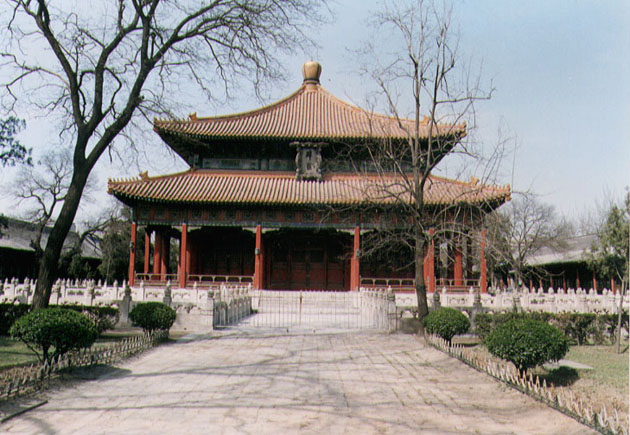

This site is dedicated to the figure of Confucius, or Kongzi. While many know Confucius as a wise sage who spouted off moral aphorisms, in reality he was a much more complex figure. The figure of Confucius has gone through many developments; in some eras, Confucius was considered a sage who possessed superhuman abilities, while in others he was revered primarily as a great teacher. Following his death, Confucius was ennobled by the court and became an object of veneration.
The figure of Confucius as an object of cult veneration might not be familiar to many readers today, yet most Chinese in the late imperial era (960-1911)--and all clasically educated males--encountered him in the Confucius Temple. To understand why the court expended such great care in venerating the cultic Confucius, it is important to consider how this ceremony fits into the larger pantheon of gods and spirits venerated by court authorities in thousands of temples and shrines throughout the capital, across the empire and beyond. Civil officials in late imperial times drew upon the Classics to compose the rites celebrated at these temples.
About the Creators
Thomas A. Wilson is a Professor of History at Hamilton College in Clinton, NY. He earned his Ph.D from the University of Chicago. Recently, he co-authored Lives of Confucius with Michael Nylan. You can find more about him at his personal website.
Stephanie Wong is a recent graduate of Hamilton College where she majored in Psychology. She has an interest in all things media related, which drew her to work with Professor Wilson on several projects related to the Cult of Confucius.
